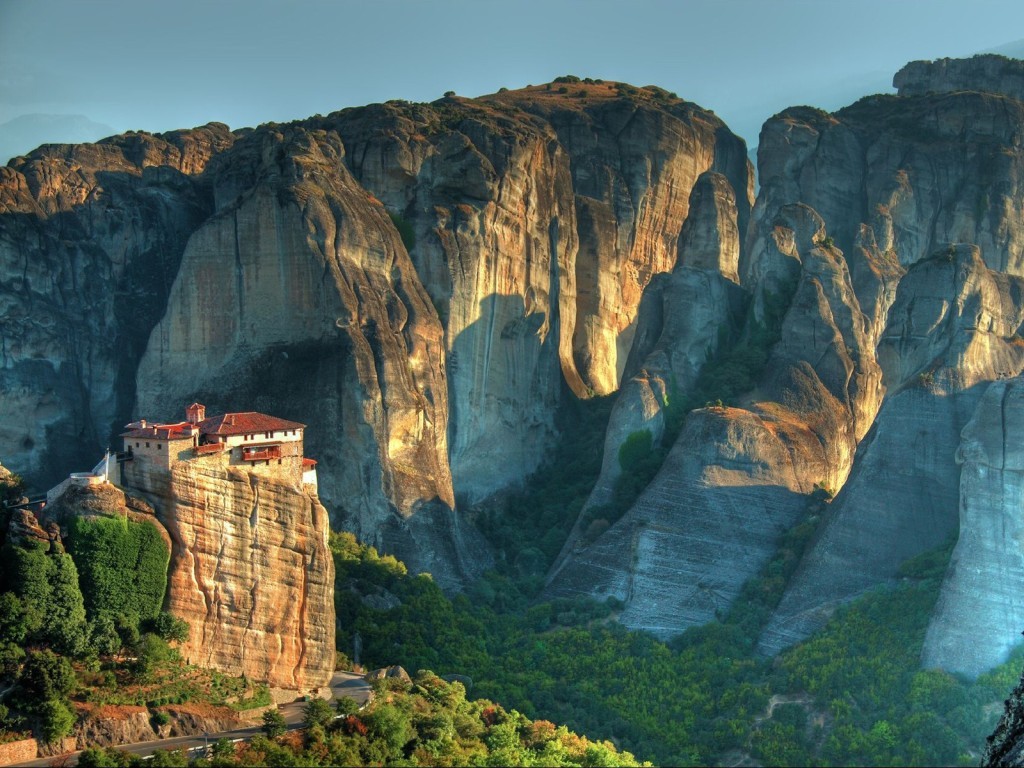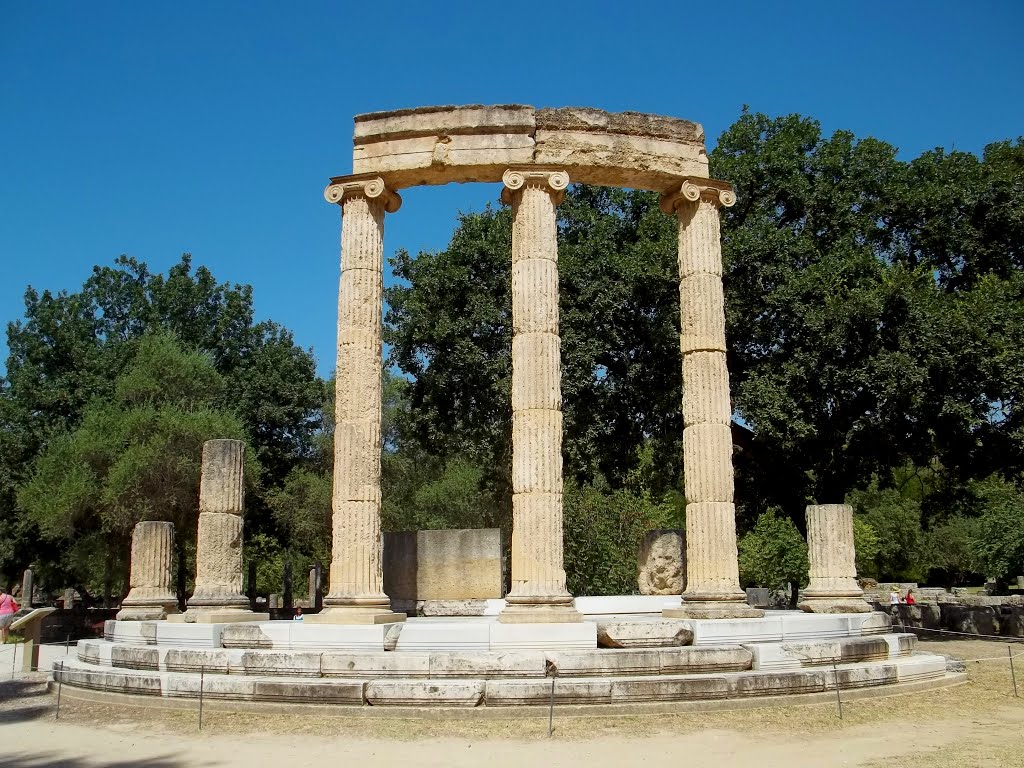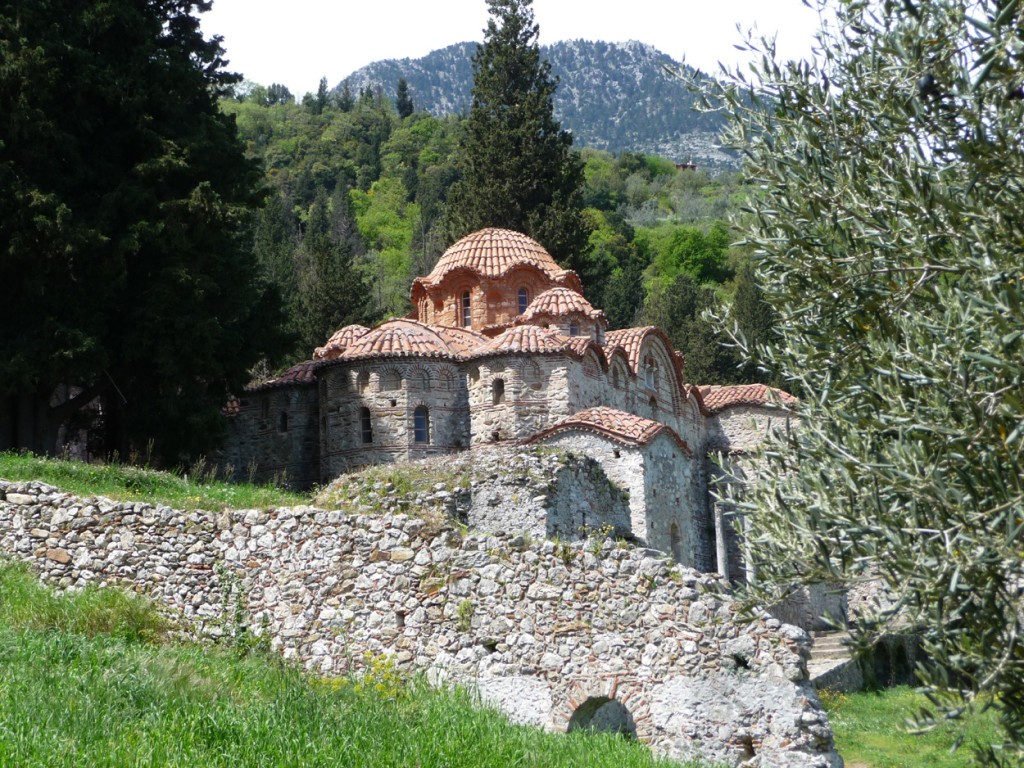Greece, a country that lies at the crossroads of many ancient civilizations, can be considered a World Heritage Site all on its own just by its very nature. Nonetheless, there are 18 recognized UNESCO World Heritage sites in Greece that have been selected and approved on the basis of their value as the best examples of human creative genius. The first site ever submitted by Greece for consideration was the Temple of Apollo Epicurious at Bassae, but since then, the list has grown and keeps on growing:
Bassae – Temple of Apollo Epicurius
Located on a remote mountainside in the Peloponnese, the temple is a well-preserved and mysterious Classical temple that daringly combines Doric, Ionic and Corinthian elements. The magnificent temple was built sometime between 450 and 400 BC around the time of the Parthenon in Athens. Archaeologist have speculated over its isolated location with one explanation being that villagers from nearby Figalos may have come here to pray to the god Apollo. Whatever the reason for its construction, the temple is grandiose and built with precision and creativity. Thanks to its isolation, it remains well-preserved.
Delphi Archaeological Site
The pan-Hellenic sanctuary of Delphi where the oracle of Apollo spoke was the site of the omphalos – the ‘navel of the world’. The archaeological monuments blend harmoniously with the superb landscape and charged with sacred meaning. Delphi in the 6th century B.C. was a religious center and a symbol of unity of the ancient world.
Acropolis, including the Parthenon, Athens
Surprisingly, this was the third to be added to UNESCO’s World Heritage list. The monuments hereare universal symbols of the classical spirit and civilization and form the greatest architectural and artistic complex bequeathed by Greek antiquity to the world. In its prime, art flourished here and Athenian statesman Pericles, under the inspired guidance of the sculptor Pheidias, transformed the rocky hill into a unique monument of thought and the arts. The most important monuments were built around the second half of the fifth century B.C.: the Parthenon, built by Ictinus, the Erechtheon, the Propylaea, the monumental entrance to the Acropolis, designed by mnesicles and the small temple of Athena Nike.
Mount Athos
The ‘Holy Mountain’ is a fascinating place that can’t be visited by women and children. This Orthodox spiritual center since 1054 has enjoyed an autonomous statute since Byzantine times. The layout of the monasteries had an influence as far afield as Russia and its school of painting influenced the history of Orthodox art. These days, about 20 of the monasteries are presently inhabited by 1,400 monks.
Meteora
This almost inaccessible region of sandstone peaks recently captured world attention when it was featured in “The Game of Thrones”. Monks settled on these ‘columns to the sky’ from the 11th century onwards. Twenty-four of these monasteries were built, despite incredible difficulties at a time of great revival of the hermetic ideal. Inside, 16th-century frescoes mark a key stage in the development of post-Byzantine painting.
Cave of the Apocalypse on Patmos
The grotto is one of the three sites jointly considered UNESCO World Heritage sites on the island. This grotto is believed to mark the spot where St. John received the visions that he recorded in the Book of the Apocalypse.
Olympia, Peloponnese
In the 10th century B.C., Olympia became a center for the worship of Zeus. The Altis – the sanctuary of the gods – has one of the highest concentrations of masterpieces from the ancient Greek world. In addition to temples, there are the remains of all the sports structures erected for the Olympic Games, which were held in Olympia every four years beginning in 776 B.C.
Mystras, Peloponnese
Mystras is the best-preserved example of a medieval walled city in Greece. Modern travelers are fascinated with its mystical castle, churches and the palatial complex of the ruling Byzantine dynasty that gives a glimpse into its bygone greatness. Mystras was built as an amphitheater around the fortress erected in 1249 by the prince of Achaia, William of Villehardouin. Reconquered by the Byzantines, then occupied by the Turks and the Venetians, the city was abandoned in 1832 leaving behind these breathtaking ruins.
OTHER UNESCO WORLD HERITAGE SITES IN GREECE
The Medieval City of Rhodes
Paleochristian and Byzantine Monuments of Thessaloniki
The Archaeological site of Delos
The Monasteries of Daphni, Hosios Loukas and Nea Moni of Chios
Archaeological site of Heraion of Samos
Arhcaeological site of Aigai (Vergina)
Archaeological sites of Mycenae and Tiryns
Historic center (Chora), Monastery of Saint John Theologos and the cave of the Apocalypse in Patmos (1999)
Sanctuary of Asklepios, Epidaurus
Old Town of Corfu
Ask me anything
Explore related questions













